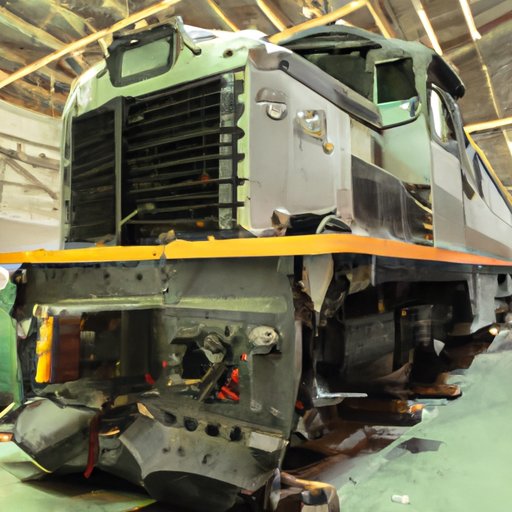
Overview of Locomotive Costs and Variables Affecting Price
A locomotive is a type of self-propelled vehicle used to haul freight and passengers on railroads. It has a single power source, either diesel or electric, and is typically used for long-distance hauling. As with any purchase, there are several factors that will affect how much you pay for a locomotive. These factors include the size, weight, design, age, and performance of the locomotive, as well as its expected life span, fuel efficiency, and maintenance costs.
The cost of purchasing and maintaining a locomotive can vary greatly depending on these factors. It is important to understand what goes into the cost of a locomotive in order to make an informed decision about which locomotive is best for your needs.

Examining the Cost of a New vs. Used Locomotive
When it comes to buying a locomotive, you have two main options: new or used. Buying a new locomotive is more expensive but comes with certain advantages, such as a warranty and access to up-to-date technology. However, used locomotives can be less expensive and may offer more flexibility when it comes to customization. On average, a new locomotive can cost anywhere between $2 million and $8 million, while a used locomotive can cost anywhere from $500,000 to $2 million.
Factors that Impact the Cost of a Locomotive
There are several factors that will impact the cost of a locomotive. The expected life span of a locomotive is one of the most important factors to consider. Generally, a new locomotive will have a longer life span than a used locomotive, meaning it will require less frequent and expensive repairs over time. Additionally, the fuel efficiency of various locomotives can have a large impact on the cost of ownership, as more efficient locomotives will require less fuel over time.
Another factor to consider is the cost of maintenance associated with owning a locomotive. Regular maintenance is necessary to keep a locomotive running safely and efficiently, and failing to do so can lead to costly repairs down the line. Common components that need to be replaced or serviced include brakes, wheels, and cables, among others.

How Maintenance Costs Factor into Locomotive Pricing
The cost of labor for repair and maintenance is another factor that affects the price of a locomotive. Skilled technicians are required to perform repairs and service the locomotive, and their rates can vary widely depending on their experience and location. Additionally, the cost of parts and supplies needed to maintain the locomotive should also be taken into consideration when budgeting for a locomotive.
A Look at the Different Types of Locomotives and their Prices
When it comes to locomotives, there are a variety of different types available. Diesel locomotives are the most common and are typically used for hauling freight and passengers. Electric locomotives are becoming increasingly popular, as they are more energy efficient and produce fewer emissions. Hybrid locomotives combine the power of both diesel and electric engines, providing a more efficient option for those looking to reduce their environmental impact.
The average price of a new or used locomotive varies depending on the type and size. Diesel locomotives typically range from $1 million to $4 million, while electric locomotives usually range from $3 million to $7 million. Hybrid locomotives tend to be more expensive, ranging from $5 million to $10 million.
Exploring the Cost of Locomotive Components
In addition to the cost of purchasing and maintaining a locomotive, it is important to consider the cost of the individual components that make up the locomotive. Common and necessary parts of a locomotive include the engine, transmission, suspension system, body, and cab. Depending on the type of locomotive, these components can range in price from a few hundred dollars to several thousand dollars.

Comparing Prices of Locomotives Worldwide
Finally, it’s important to note that the cost of a locomotive can vary significantly depending on where you purchase it. Regional differences in the cost of a locomotive can be attributed to various factors, including availability of parts, labor costs, and local taxes. For example, used locomotives in Europe tend to be more expensive than those in the United States due to higher labor costs and stricter regulations.
It is also worth noting that the prices for new and used locomotives can differ greatly from country to country. For instance, new locomotives in India typically cost less than half of what they cost in the United States. Additionally, used locomotives in China tend to be cheaper than those in other countries due to lower labor costs and the abundance of older models.
Understanding the cost of a locomotive is essential for anyone considering purchasing one. From size and age to fuel efficiency and maintenance costs, there are many variables that affect the cost of a locomotive. By taking all of these factors into account, you can make an informed decision about which locomotive is best for your needs.
(Note: Is this article not meeting your expectations? Do you have knowledge or insights to share? Unlock new opportunities and expand your reach by joining our authors team. Click Registration to join us and share your expertise with our readers.)
